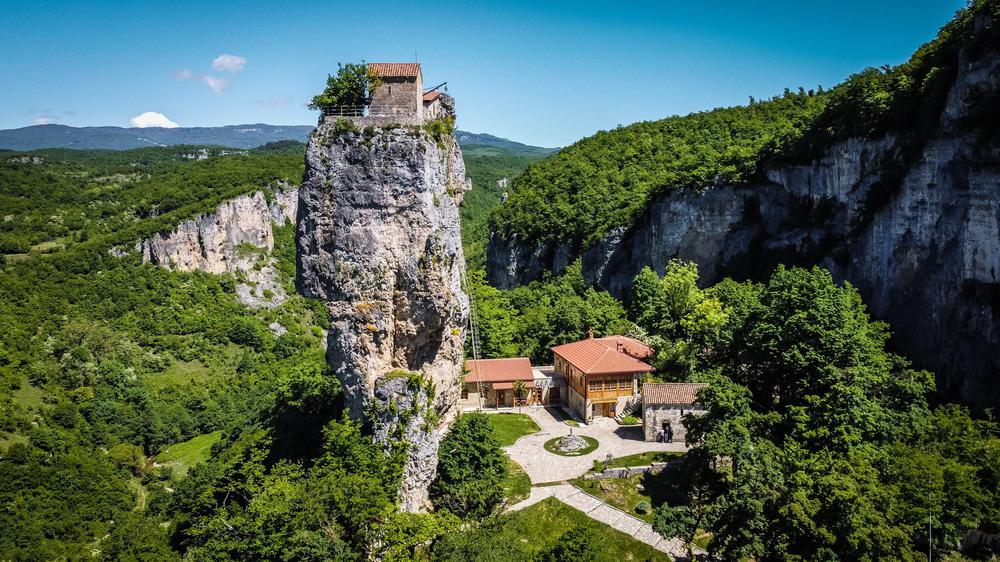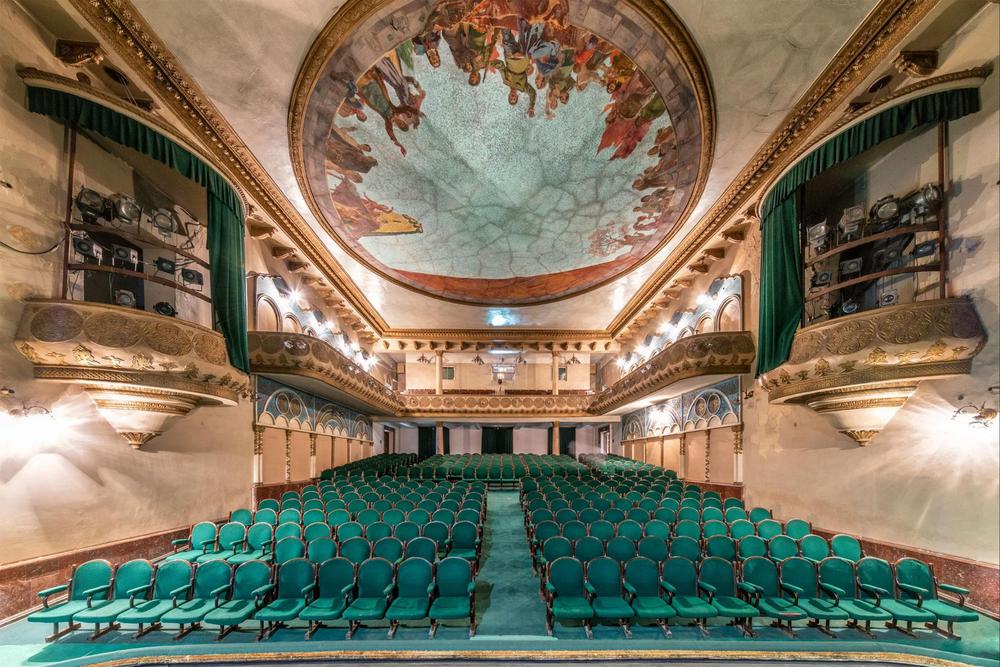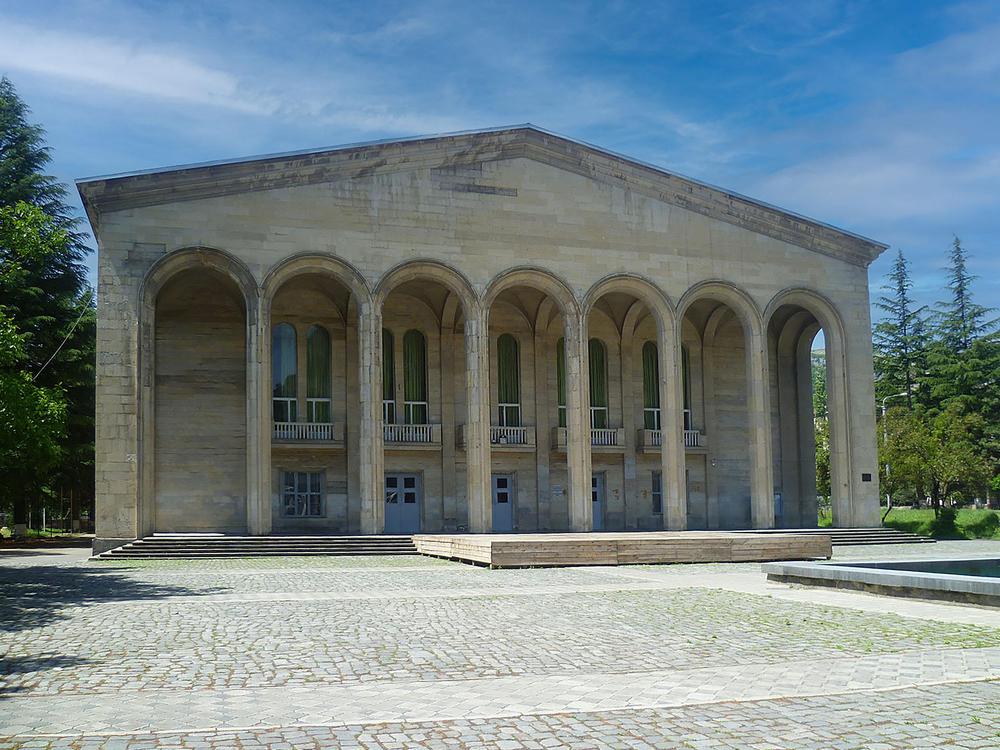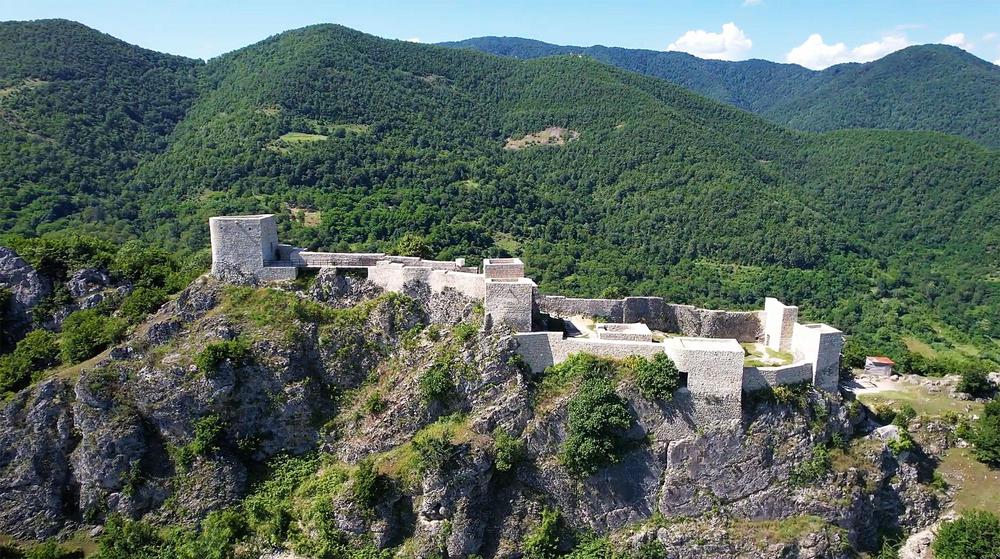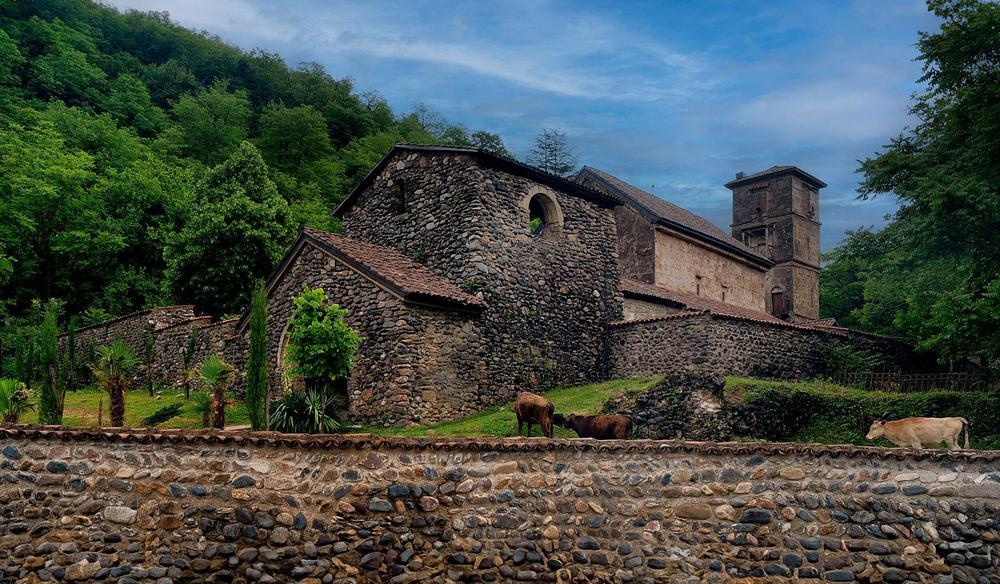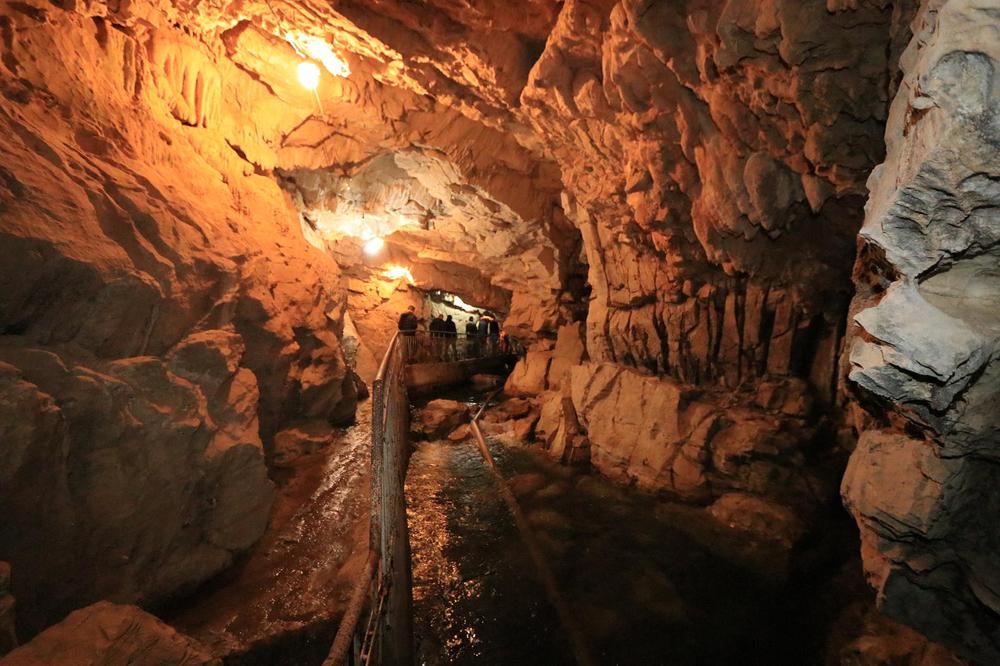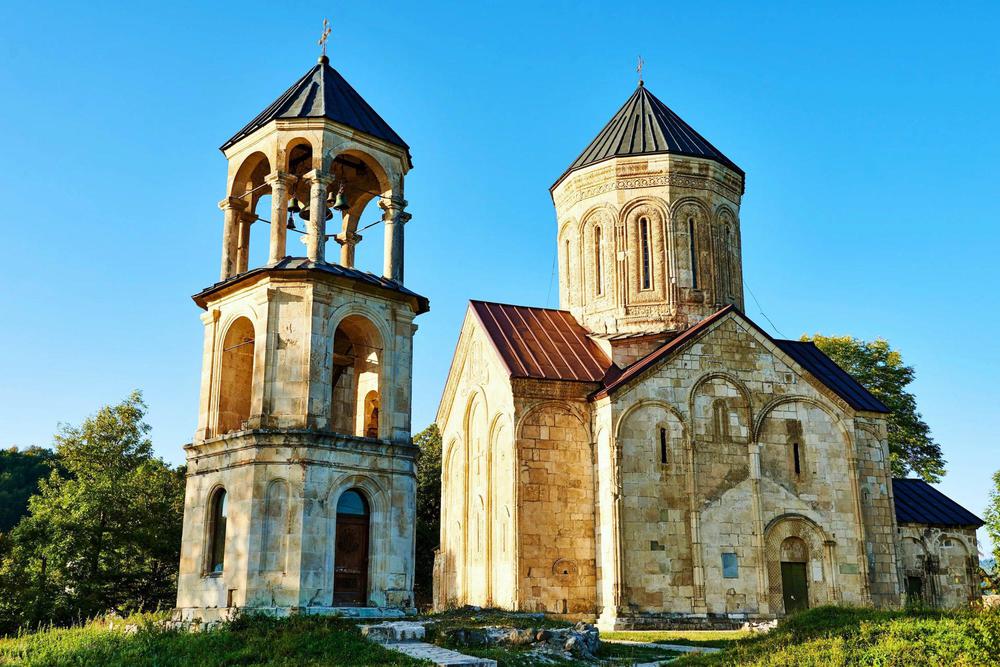Tucked away in the charming village of Katskhi, near the town of Chiatura in Georgia, stands a testament to faith and architecture that has survived the ravages of time – the Katskhi Monastery of Nativity of the Savior. Perched amidst the serene surroundings, this monastery stands proud and lofty, with a backstory as fascinating as its hexagonal design.
The Katskhi Monastery was conceived in the period of 988-1014, a brainchild of the influential Baguashi family. The monastery's architecture, with its gradually narrowing cylindrical levels and six apses, is as rich and diverse as its history. Imagine a grand three-tiered cake, with the largest layer at the bottom being the faceted gallery, followed by the main body of the church, and topped by the drum of the dome.
Inside, you'd find a single spacious compartment, with semi-circular apses radiating around the subdome bay, akin to petals around a flower's center. The altar apse projects outward prominently, much like the North Star among its celestial counterparts, thanks to its grand bema, which is equivalent to a stage in a modern theatre.
The monastery was once a glistening spectacle with rich ornamentation. Although some decorations from the upper tiers were lost during the restoration in 1854, a majestic composition, the Exaltation of the Holy Cross, remains. This relief at the southern vestibule features a cross held aloft by four angels, still capturing the eyes and hearts of visitors.
Encircling the church is a pentagonal wall, which seems to guard a freestanding bell tower in its eastern corner. These structures were later additions, believed to be from the 17th or 18th century.
The Katskhi Monastery carries the weight of history in its stones. Built in honor of the Holy Trinity, it was completed around 1010-1014 under King Bagrat III of Georgia. The monastery served as a familial abbey and burial ground for the Liparitids, who were once a powerful family in the region. After falling into oblivion post the Liparitid dynasty, it was rejuvenated in the 16th century and was later closed down by the Soviet government in 1924. Today, the monastery, after being revived in 1990, is a thriving center of Christian culture and a must-visit for history and architecture enthusiasts.
The Katskhi Monastery is not just a historical site, but a cultural hub that once held a rich library, treasured icons, and rare manuscripts. Although the library was unfortunately stolen, many of these cultural artifacts are preserved in the museums of Tbilisi. The monastery continues to be a symbol of Georgia's rich heritage, resilient faith, and exquisite architectural prowess. It's an alluring maze of history and spirituality, waiting to be explored. So, pack your bags and don't forget your camera. The Katskhi Monastery is a sight you don't want to miss!



